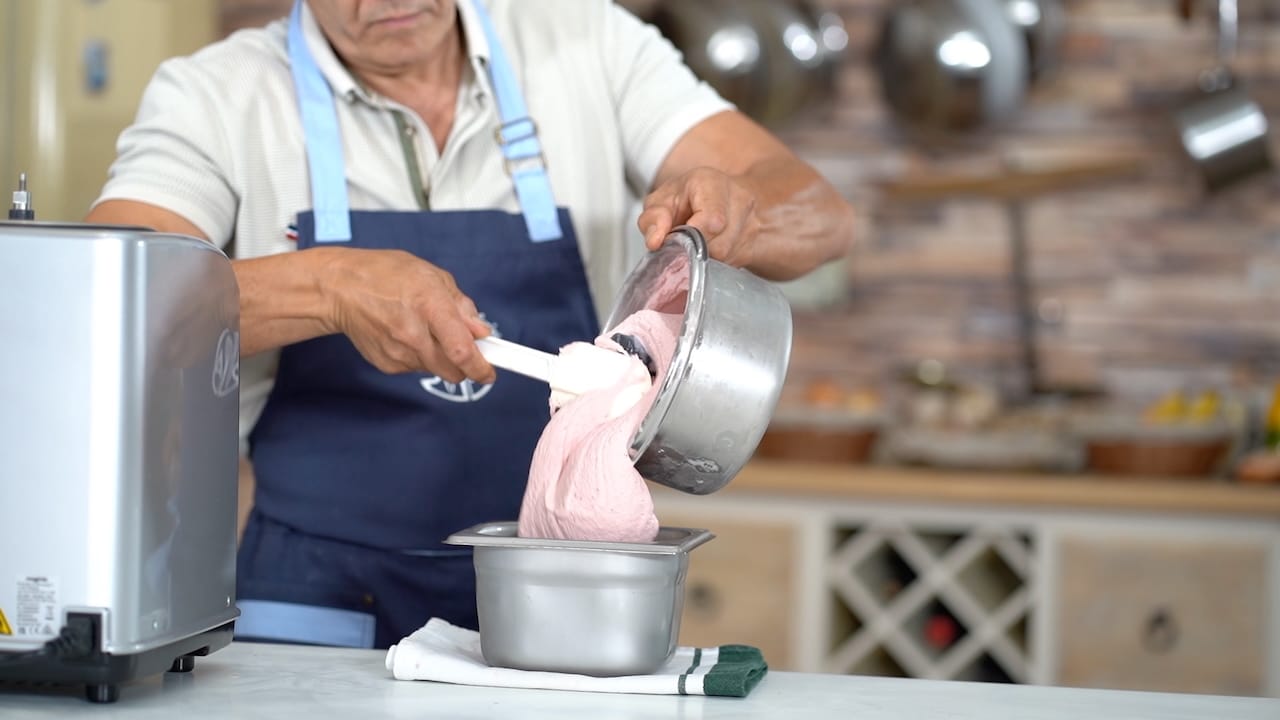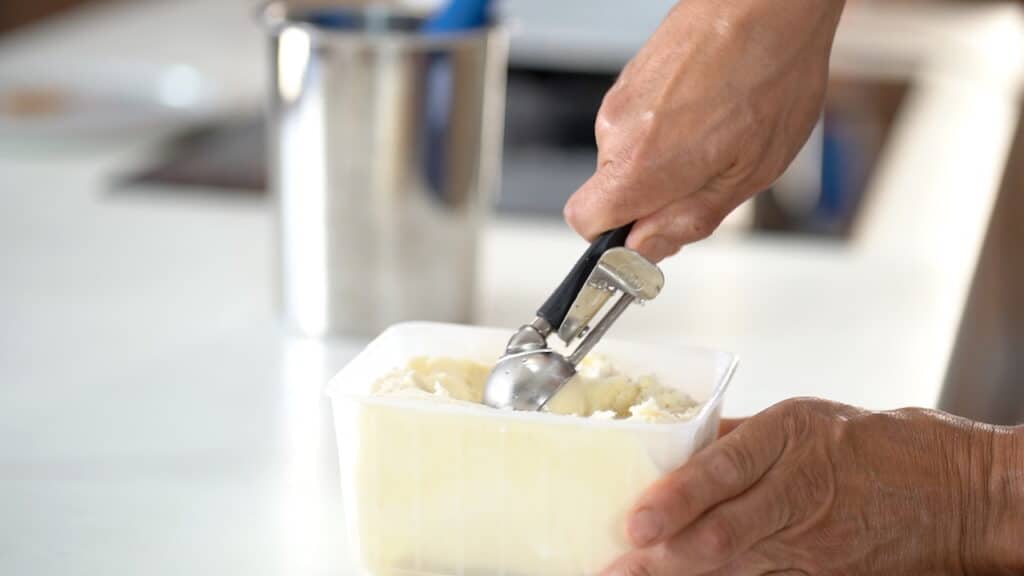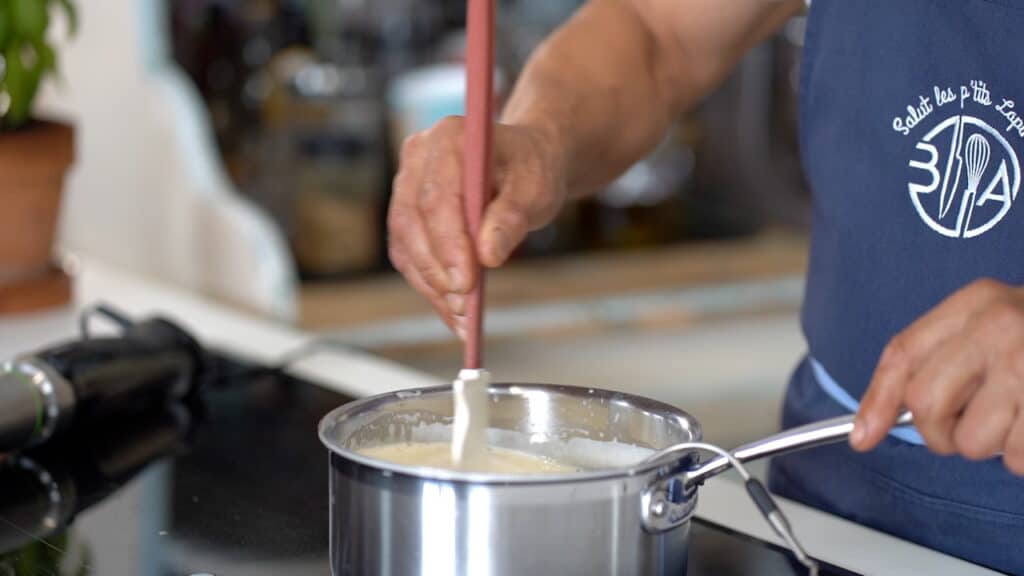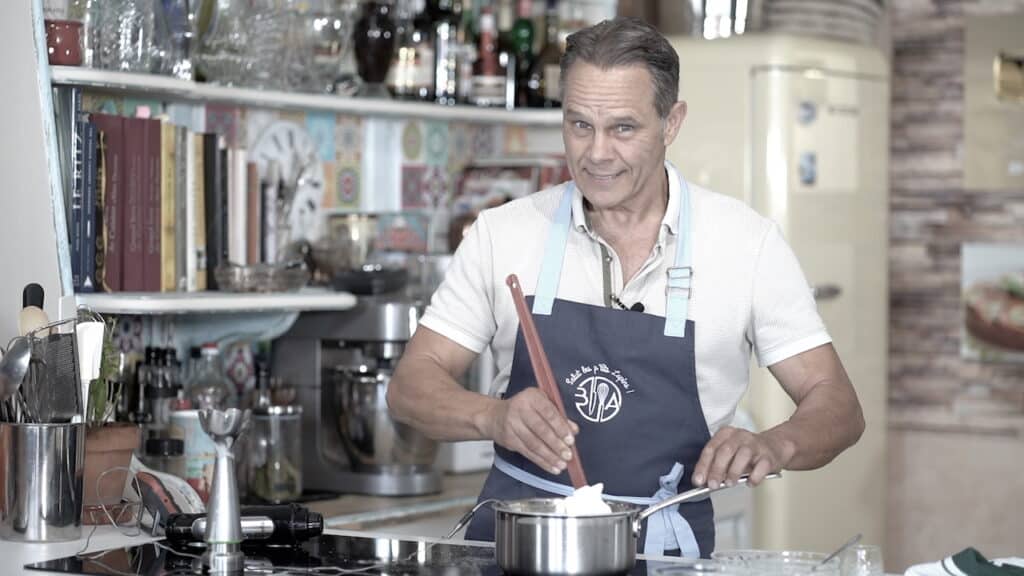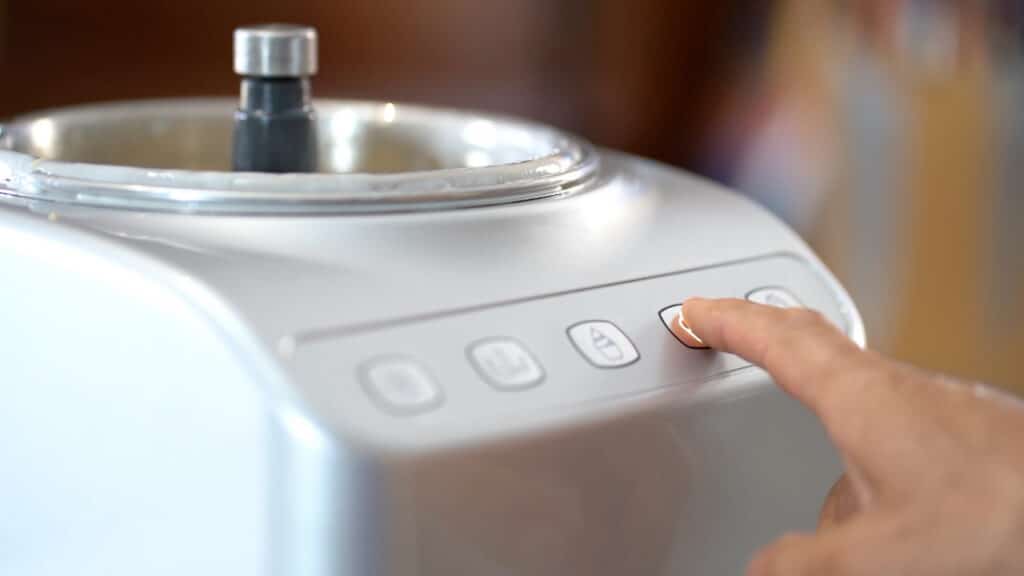I’ve learned that success in frozen desserts doesn’t come only from flavor. Texture, structure, and melt-in-the-mouth feel are just as crucial. And to master them, you need more than recipes, you need science. This article explores the physical and chemical properties of ice cream: how water, fats, and sugars interact; how crystals form or are avoided; and what happens when emulsions and foams are frozen. Understanding these fundamentals gives you the power to refine every detail of your frozen creations.
Notice: This article is part of a comprehensive series dedicated to the craft of ice cream and frozen dessert making. We recommend reading the articles in the suggested order. You can find all eight articles in this series listed at the bottom of the page.
Water, solids and structure: understanding the frozen matrix
At the core of ice cream lies a delicate balance between water and solids. Water accounts for 55–65% of most ice cream mixes. But freezing all that water would make a rock-hard block. The secret to creaminess is to keep much of the water “trapped” in a controlled, partially frozen state.
This is where the concept of free water and bound water comes in. Sugars, milk solids, and stabilizers bind part of the water, lowering its freezing point. Only a fraction of the total water crystallizes, while the rest remains as an unfrozen liquid film around the other components.
Fats, proteins, and air play additional roles. Fat globules help separate ice crystals and form the structural backbone. Milk proteins stabilize air bubbles during whipping and freezing. The result is a multi-phase frozen foam: solid (ice), dispersed fat, air cells, and an unfrozen syrup solution. When properly balanced, this structure is what creates a stable, smooth, luxurious ice cream.
How freezing transforms the mix ? freezing point and crystallization
The freezing point of ice cream is not 0°C. It usually lies between -3°C and -6°C, depending on sugar concentration and total solids. This “point de congélation” is key to texture. Too high, and the product melts too fast. Too low, and it becomes hard and icy.
Sugars are the primary modifiers of freezing point. Glucose syrup, dextrose, and invert sugar all depress the freezing point more than sucrose. This is measured using the potentiel cryoscopique, which indicates the ability of ingredients to reduce ice crystal formation.
The size and number of ice crystals determine texture. Ideally, they should be under 50 microns for a smooth mouthfeel. Large crystals (>100 microns) feel gritty or coarse. To prevent growth, the freezing step (turbining) must be fast, followed by rapid hardening at -35°C to -40°C. Even storage matters: temperature fluctuations encourage recrystallization, leading to defects.
Thus, controlling the freezing curve, through sugars, solids, and process, is essential. It’s not just about freezing; it’s about how you freeze.
Emulsions, suspensions, and foams: the science behind creaminess
Ice cream is more than a sweet snack. It is a complex, dynamic emulsion.
The base is an oil-in-water emulsion: tiny fat droplets dispersed in a continuous water phase. Milk proteins and emulsifiers (like mono- and diglycerides or egg yolk lecithin) help stabilize these droplets and prevent them from coalescing.
When the mix is whipped and frozen, it becomes a foam: air is incorporated and stabilized by partially coalesced fat globules and proteins. This foam structure defines the overrun (amount of air), affecting lightness and mouthfeel.
Additionally, many components are present as suspensions. For instance, cocoa particles in chocolate ice cream or fruit fibers in sorbet. These must be evenly distributed and stabilized to avoid sedimentation or textural issues.
Each of these systems interacts. Emulsifiers impact fat destabilization, which affects air retention. Stabilizers (like locust bean gum or guar) increase viscosity, reducing ice crystal growth and improving body. Even tiny changes in ingredient ratios shift the equilibrium.
Mastering the physical chemistry of emulsions, suspensions, and foams allows me to troubleshoot textures, improve melt behavior, and deliver consistent, premium results.
Precision is the path to perfection
Behind every scoop of artisanal ice cream lies a scientific ballet of water, fat, air, and solids. Understanding physical and chemical properties isn’t optional, it’s a necessity for any chef who wants control over texture, stability, and refinement.
With the right knowledge, we can avoid common defects like iciness or soggy melt, and push boundaries with innovative textures. From freezing point depression to fat destabilization, every step is an opportunity to enhance quality. That’s the difference between following a recipe and mastering a craft.
Next, we’ll explore the ingredients themselves in detail, their origin, roles, and how to choose and combine them for performance and flavor.
